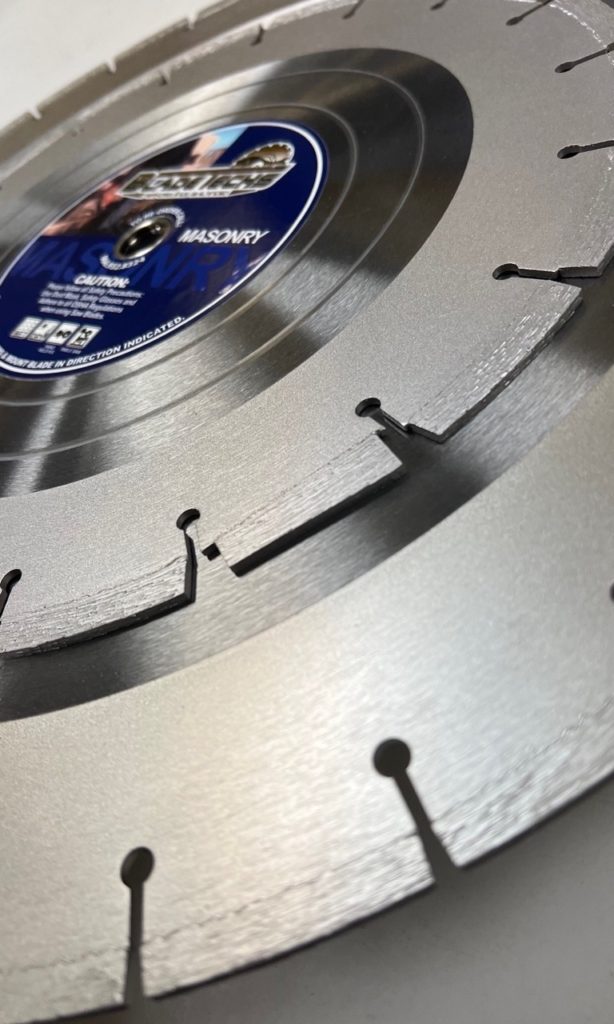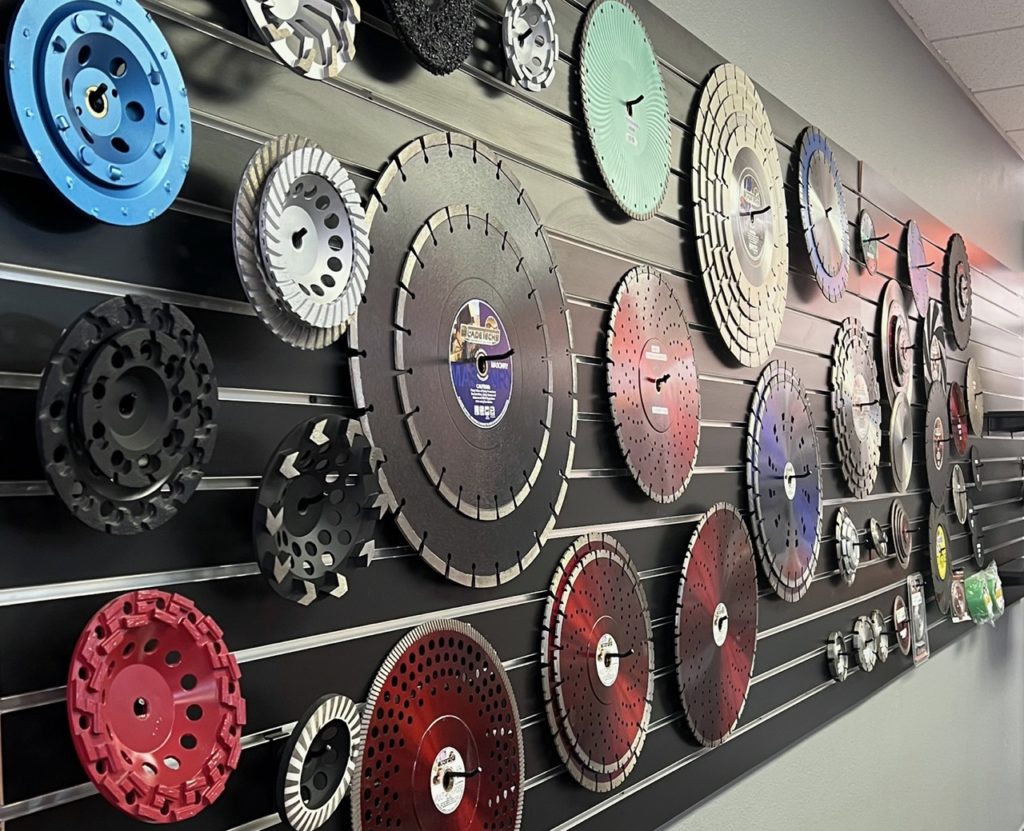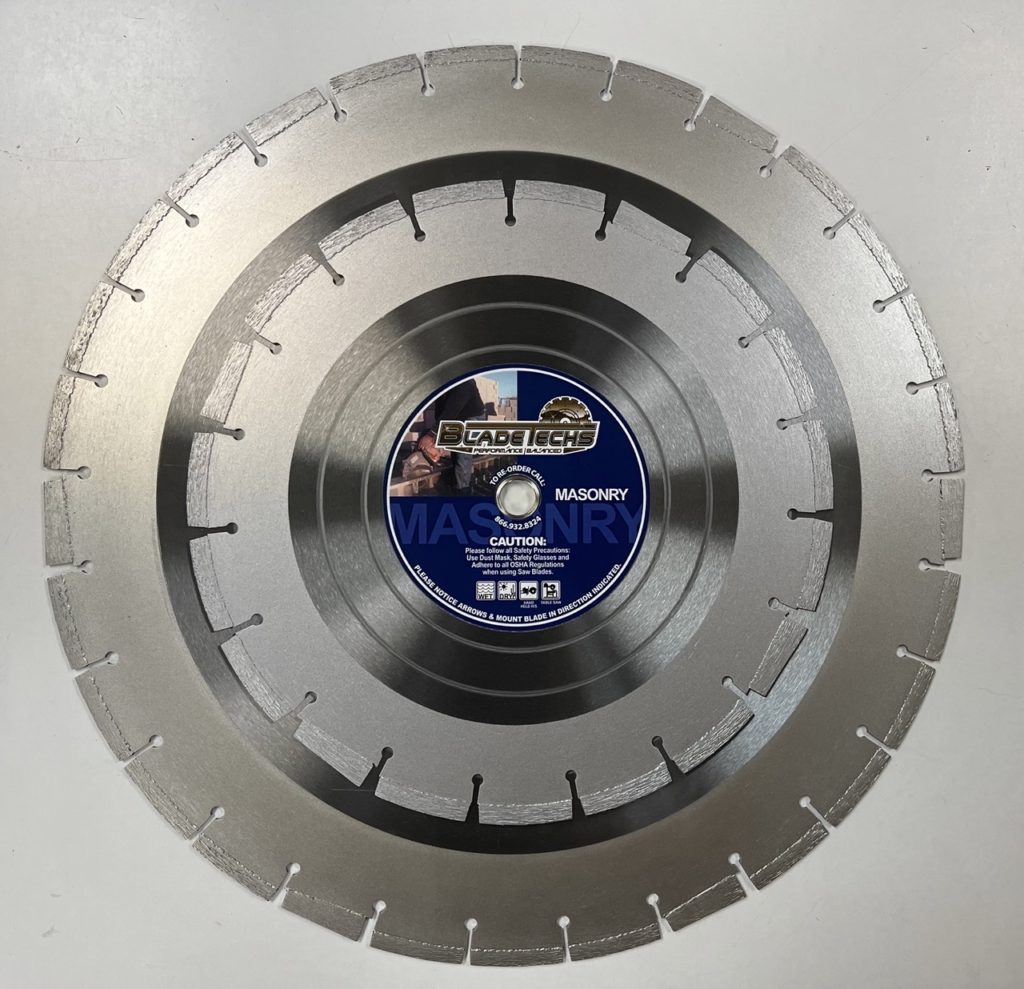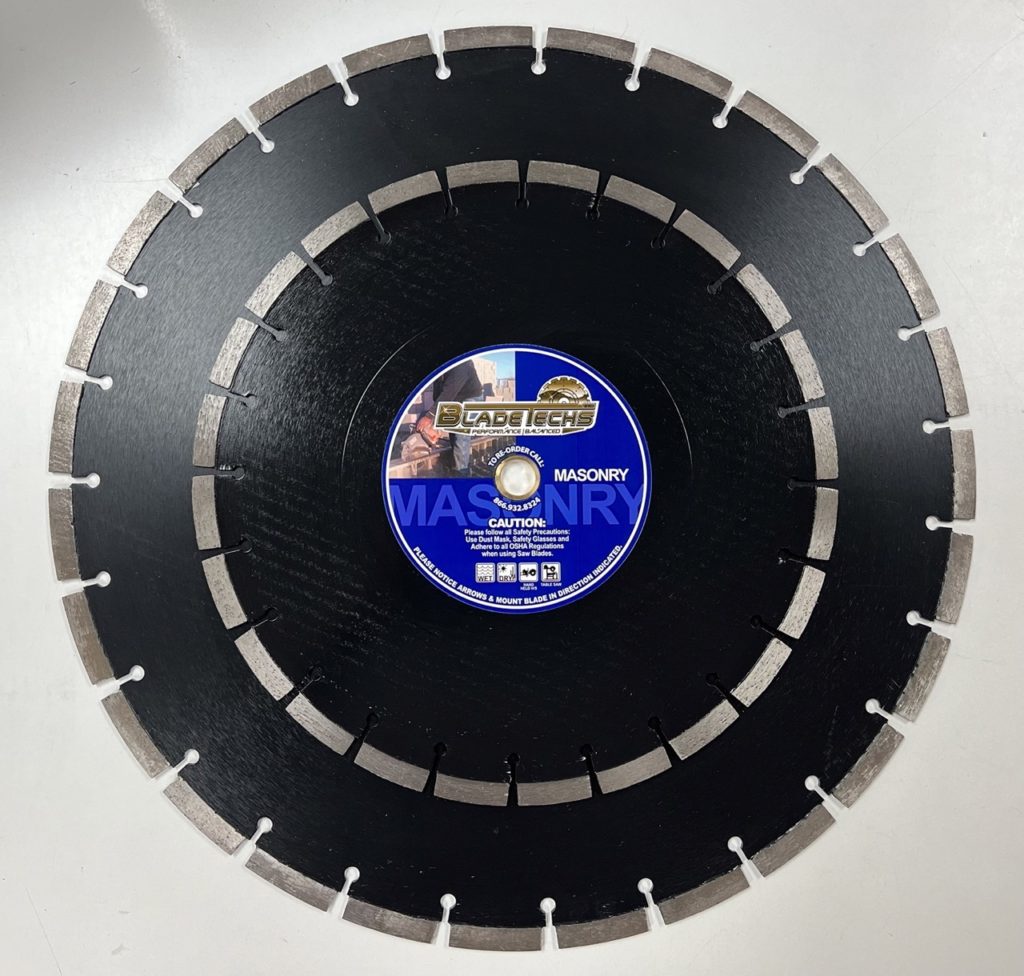Words and Photos: Shaun Kelleher, Blade Techs Inc.
It seems the days of cutting blocks by chipping at them with a trowel or chipping hammer have all but disappeared. A drop in highly skilled masons and evolving methods contribute to blades being a faster way to train operators to shape brick and block with easier precision. This is an old-school skill that has mostly faded away and conceded to the diamond saw blade. Now, the need for speed, accuracy, and higher production has become dependent on diamond saw blades. However, getting dialed in on the right blade to meet your demands can be quite a challenging process.
When it comes to The Diamond Saw Blade World, there are well over a thousand different blades, and there are so many directions to go in. Fortunately, this article focused on the masonry industry is going to help narrow all the conversations we could have and look at how these blades affect masonry.
What qualifies me to speak on the topic of Diamond Saw Blades starts with 27 long but fast years in this industry. I started telemarketing blades in 1996 because I needed a job. Early on, I broke the mold and took my telemarketing to the field. I began direct relationships with manufacturing engineers by having them join me onsite, where we began the never-ending process of research & development for producing better technology for Diamond Saw Blades. Around 1999, I began visiting municipalities and companies to educate them on the proper ways to use the blades. This resulted in the start of my own Onsite Blade Safety Training Class, which was an extremely important factor missing from the saw blade industry and still is. I stayed with that company for six years until I started my own company in 2002, Blade Techs, Inc., in Phoenix, Arizona, which is now twenty-one years strong. I am still on jobs almost daily.

When buying Diamond Blades, make sure you are getting a blade that is specifically designed for the materials you are cutting and the region/s your materials are produced and used in. Blades must be specified per the equipment they run on. The aggregates are a major factor as all brick, block and stone are not of the same geographical compositions. Because brick and block have higher silica contents, they are more abrasive in nature. Therefore, a harder bonded diamond blade is usually the correct blade to attain the most life. In the case of hard brick, pavers, concrete, hard stone, and steel, a softer bonded diamond blade is needed to ensure faster cutting speed. This creates a challenge for blades that are not specific to the materials or are considered general-purpose blades. Smaller-diameter diamond blades are almost all general-purpose blades unless specified otherwise. This can complicate the choices and makes it easy for salespeople to sell you the wrong blades. This is one of the cans-of-worms of the industry and a major reason seasoned purchasers are so apprehensive to buy from fast-talking, pushy blade guys.
Safety: Safety should be the number one concern when using these high-speed blades. Since they are turning at high rpm’s, it should be a daily practice for every user to check the blades at least at the beginning of the day, and they should be checked periodically throughout the day. Blades get dropped or smacked around. They get fatigued and can crack in the keyhole slots or break segments, which sometimes happens. If a segment breaks off clean early in the use of a blade, there is the highest chance it’s from a bad or weak weld from manufacturing. If it happens further into use, it could be other factors. Hence why it is so important to always check the wear status of your blades.
Silica Dust: This goes without saying; however, I preface every class by educating the importance of protecting themselves and surrounding workers by wearing a mask or cutting with water. I used to find new customers by following the dust clouds across the city. Now I rarely see them, but I still see guys cutting without water. I tell workers, “Don’t be so macho that you won’t wear a mask. Silicosis is no joke, so put a mask on. Do it for your family”.

Direction: Blade Direction is important. That’s why there is an arrow. When the arrow wears off or can’t be seen anymore, the best way to determine the blade’s direction is to look closely at the diamonds. There should be a tail dragging behind the diamond; this is the Comet-Tail Theory. The diamond is the head or comet, and the drag of the tail tells the direction the blade was cutting in. If you can’t find the tails, then the segments are probably glazed over, and the blade is not cutting well. It’s probably not the right blade for the material you are cutting.
Glazing: When a blade’s segments glaze over, the metals have heated and melted over the diamonds. This will impede the cutting speed, causing it to rise out of the cut or bog down. Then overheating can happen and lead to core cracking in the keyhole slots. From there, the core can overheat or lose tension and start to wobble. This can lead to the blade jamming or segments cracking or breaking off, or worse.
Solutions: Most likely, it’s the wrong blade for the material or saw, so get another blade or the right blade. Trick-of-the-trade; you can also change the blade around and run it in reverse in some abrasive materials such as asphalt, block or sandstone. Run it only until you can see and feel the diamonds exposed and coming back to life, then change it back to the correct direction. If you continue to use it on the same materials and it happens again, you still need to get the right blade; however, this might get you through the cut without shutting you down or causing bigger problems. (Exception: if there are undercut segments, running the blade in reverse could cause those segments to break off, so don’t do it). A diamond blade should cut only at the speed it’s capable of. Forcing a blade could cause it to bog down, kick back or fatigue the belts and drive system of the saw. Let the weight of the saw and blade do the job.
Wet and Dry Cutting: Keeping it simple, a Dry Cut Blade can be run dry or wet. A Wet Cut Blade can only be run wet. It is rare that too much water negatively affects the cutting. It just floods the working area.

Everyone would love a “one blade does it all” solution, but that is not always realistic. The trade-off is usually life for speed and speed for life. “Performance balanced” and safety are always the goals. A good blade salesperson should know what provides the best production for their customer’s particular need, though that doesn’t mean it’s the best until the customer is safely satisfied with the overall performance.



